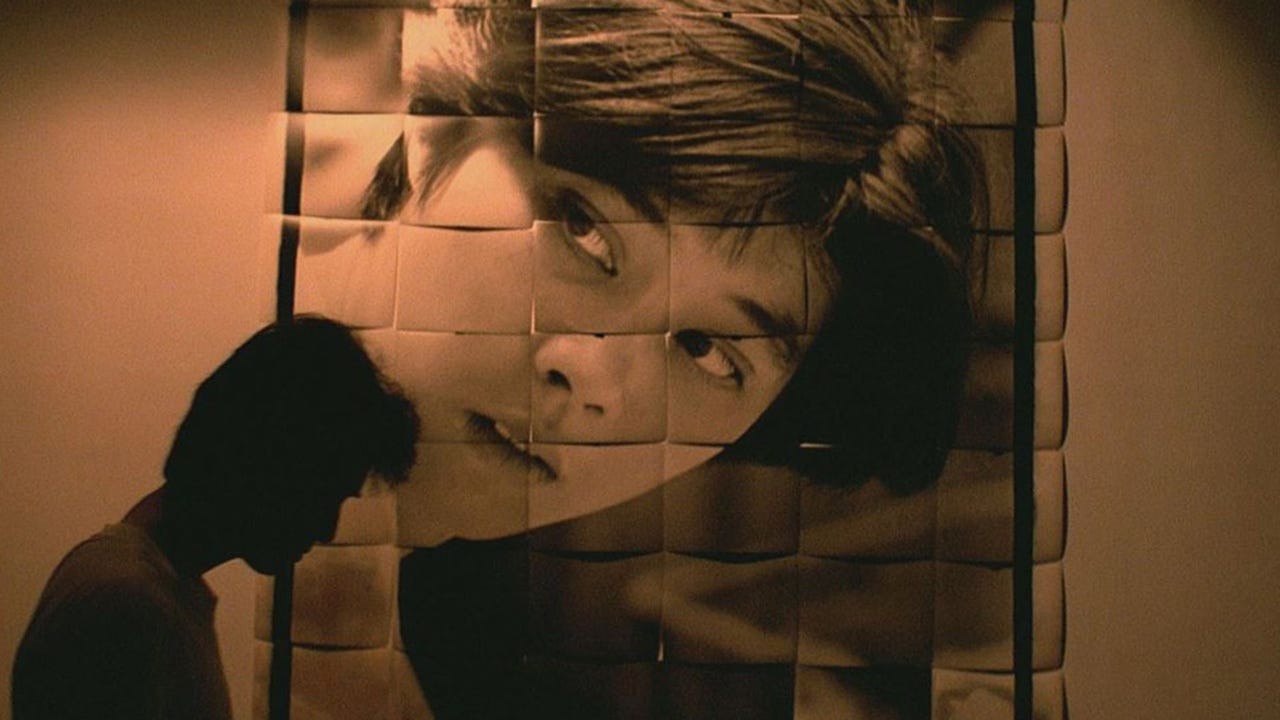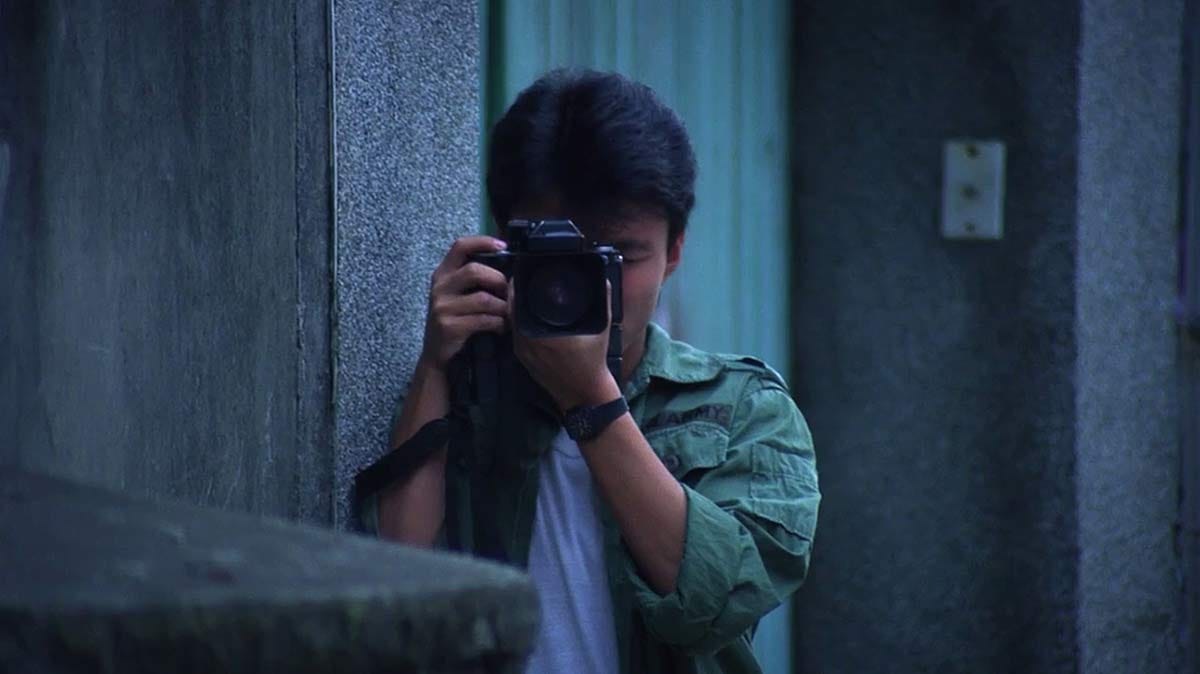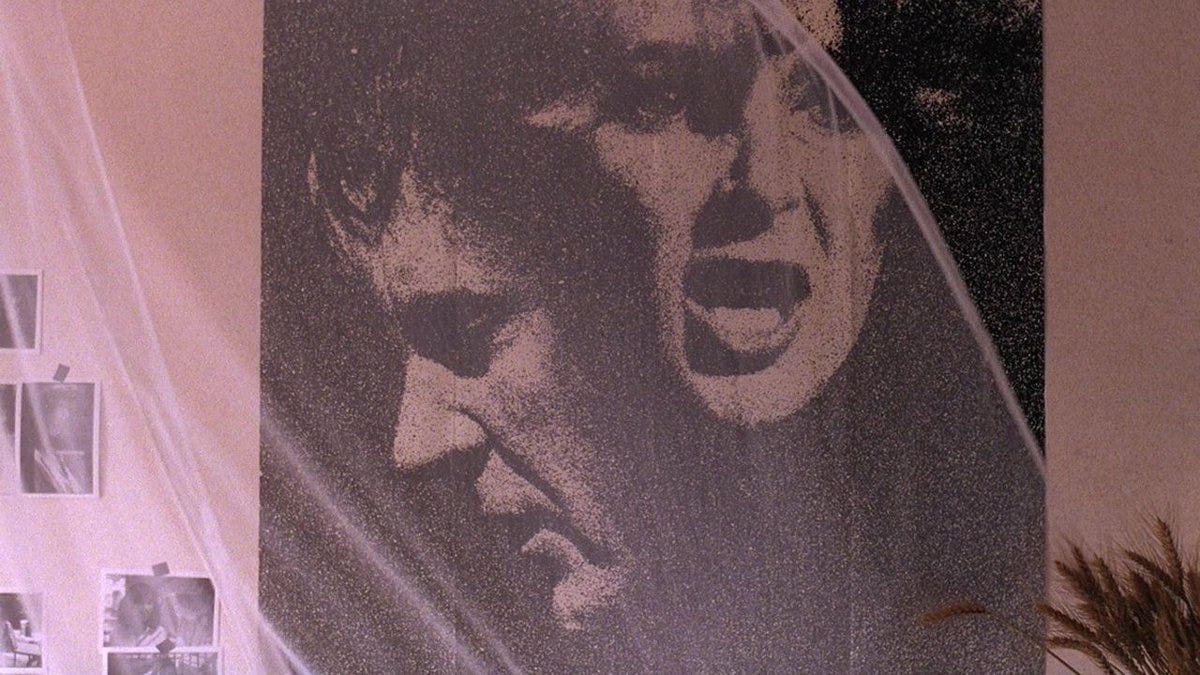Directed by Edward Yang
Taiwan, 1986
A riddle wrapped up in a mystery inside an enigma (h/t @WinstonChurchill). The Terrorizers is a strange film, disorientating, but also beguiling if you can afford it the time and space it needs. Shot in 1986 by Edward Yang, it was part of the Taiwanese New Wave. Following the relaxation of censorship, Taiwan moved away from authoritarianism and sponsored propaganda, and started funding Taipei filmmakers to fight off the invasion of Hong Kong cinema. Taiwan began producing films that were gritty, realistic, and truthful. They were also characterized by a rejection of traditional story-telling techniques in favour of non-linear narratives and impressionistic cinematography. And then along came The Terrorizers, which the US literary critic, Frederic Jameson, labeled the post-modern film.
The film begins with a bravura opening sequence: an anonymous body is lying facedown in the street; we see static shots of alleyways and empty windows with a pronounced delay before anyone comes into frame. We hear gunshots only after seeing the body. This scene is witnessed by a young photographer from high up in his flat while his girlfriend lies in bed reading. The editing is cool and elliptical. We hear police sirens and they get louder. The camera cuts to the photographer’s trousers on the floor, he picks them up. The camera cuts to his cameras on the floor, he picks them up. We then cut to his boots but nothing happens so we watch his girlfriend, now asleep … then you hear the sound of the boots. Neat trick. We cut from the sleeping girl back to the dead body. The photographer is now in the street, ready to witness the inevitable shoot-out when the cops arrive.
Despite the police warning him off he snaps pictures of the unfolding events and captures an image of a young Eurasian woman, Susan (An Wang), as she falls while escaping from the scene. She is seriously injured and collapses in the street so he takes her to the hospital. The film then opens out at the same time as closing in, focusing on four story strands that intertwine. Li Lizhong and Zhou Yufen, a middle class couple, a doctor and an author, are drifting apart while both deal with career crises. Li (Lee Li-Chun) is looking for a leg up in the hospital hierarchy so he sabotages the work of his closest colleague. Zhou (Cora Miao) has writer’s block and spends hours staring at the blank pages of her novel with little success.
The photographer (Ma Shao-Chun) has becomes obsessed with the image of Susan, much to his girlfriend’s distress. On discharge from hospital, Susan is imprisoned in her bedroom by her mother and kills time by making a series of prank phone calls. One of her random victims is Zhou Yufen: Susan playfully tells her that she is the mistress of her husband. It comes as no surprise that her mother locks her up because as soon as she manages to escape, Susan is back hanging out with Taipei gangsters, picking up men, taking them to her hotel room and robbing them. Meanwhile Zhou uses that prank call as a reason to leave her husband, Li, and reunite with her ex. He is a successful publisher, and Zhou is now able to finish her novel which becomes a bestseller: Notes from a Marriage.
An exposition of the narrative doesn’t serve The Terrorizers well. This is a film about images and re-interpretations of those images. Edward Yang plays not only with the relations between cause and effect but also dreams and reality. Yang was a manga fan and studied animation, which is reflected in his framing of shots. He uses a static camera with extended takes, and those takes often fix on liminal spaces. We also see repeated images in the frame, such as the otherworldly spherical green water tank outside the photographer’s apartment block.
His main characters lead detached lives observing life from above, from their apartment windows. The city itself, Taipei, seems empty of people, except for our cast. The acting has a flatness about it, almost Bressonian in style, that underpins the sense of alienation - even anomie. Modern life, it seems, is rubbish.
Robert Bresson, the French film director, had an idiosyncratic approach to acting. Rarely using professionals he asked his performers to empty their minds of thought, to speak as if to themselves, and he subjected them to dozens of takes so their actions and words would become automatic. He reduced his characters to formal elements - the human figure (or a donkey, for that matter) as a blank slate. In Au Hasard Balthazar (1966) the title character is a donkey and of course Bresson refused to use one with any training.
As an audience we are drawn into the conflict when in an extended monologue Zhou Yufen has a cathartic outpouring, challenging her husband Li about the ruinous state of their marriage. But she is speaking to the camera and looks directly at us as she snaps: “Do you understand? You don’t do you … you still don’t get it!”
Yang’s use of colour is striking too: much of the city is muted, grey and washed out but as the film’s leisurely pace accelerates towards the end, vibrant colours – greens and reds – appear in furnishings and the background. In a direct commentary on The Terrorizers’ themes, the photographer has an unusual poster of Elizabeth Taylor and Robert Burton on his wall. It’s from the film ‘Who’s afraid of Virginia Woolf?’ based on Edward Albee’s play. The play is about a dysfunctional and self-destructive marriage, but also the fantasies that we create to evade the difficult realities of life.
Dreams are prominent in The Terrorizers. Yang tests our ability to make sense of the narrative by repeatedly blurring the line between fiction and reality. Non-sequiturs abound and seeming connections between shots are often misleading. This is a cinema of confusion. The obvious and much noted reference to The Terrorizers is Antonioni’s Blow-up, another film about a photographer’s obsession with an image and the elusiveness of reality. But, and it may be clichéd, it has to be said that The Terrorizers is a (David) Lynchian film: the juxtaposition of the mysterious with the mundane, and the preoccupation with dream-life. Often that term is pejorative suggesting that work is derivative but Edward Yang’s film was released in the same year as Blue Velvet, 1986 - coincidence?
And the soundtrack? Minimal. In fact, almost absent with the exception of The Platters’ Smoke Gets in Your Eyes which plays in an exquisite three-minute synecdochical montage:
I was a big fan ... playing with cause & effect ... art imitating life, which then imitates art again - T
I appreciated elements of the filmmaking but struggled to remain interested in the story which was meandering and hard to follow - N
Reids’ Results (out of 100)
C - 64
T - 74
N - 53
S - 75
Hmm … quite a split in those scores. If you have seen The Terrorizers do let us know your thoughts. And once again thank you for reading Reids on Film.
Coming next … Enys Men (2022)







